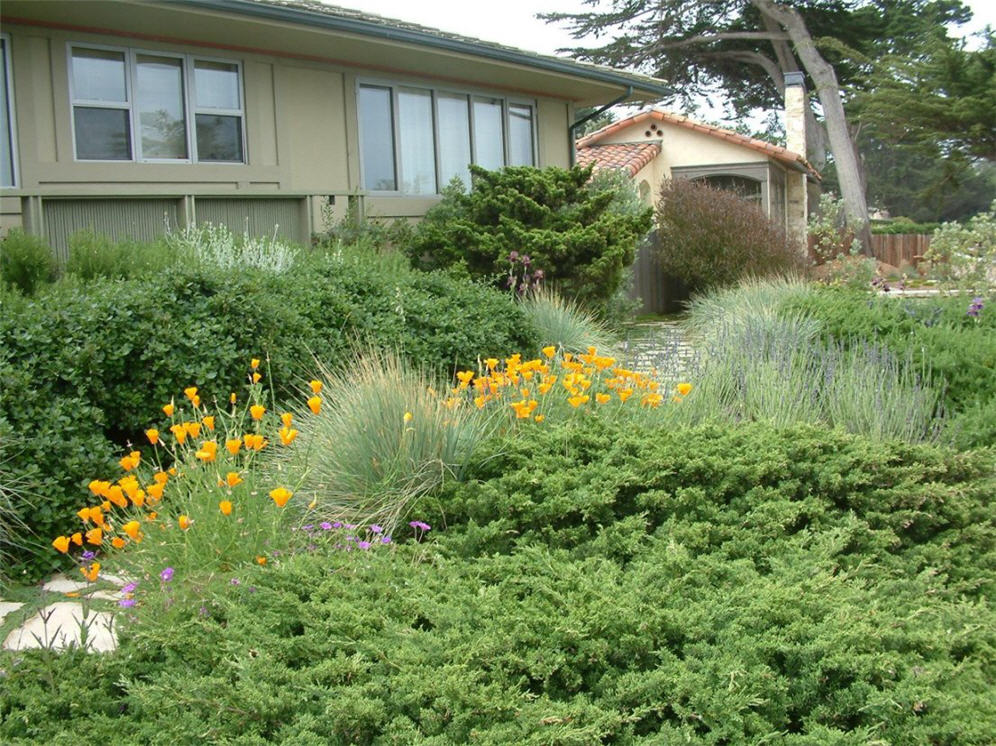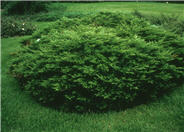
Common name:Arcadia Juniper
Botanical name:Juniperus sabina 'Arcadia'
A very hardy evergreen with dense, lacy, soft foliage, of a bright green color, the 'Arcadia' is excellent for use as a wide border, ground cover, or low foundation plant.

Common name:Blue Oat Grass
Botanical name:Helictotrichon sempervirens
The blue oat grass is a evergreen blue clumping grass that grows 12-18 in. tall and wide. Its showy flowers are 1-2 ft. above the foliage. This plant looks good alone as well as in mass plantings. The blue oat grass likes dry hill sides and is drought tolerant. -Cornflower Farms
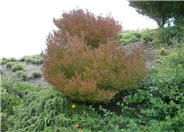
Common name:Purple Hopseed Bush or Hop Bush
Botanical name:Dodonaea viscosa 'Purpurea'
This fast-growing shrub has an upright, branching habit that reaches a height of 12-15', with willow-like leaves that are 4" in length. Its foliage is bronzy-green in color, which turns a reddish-purple shade in the fall and winter. It has compact growth and requires full sun for the best results.
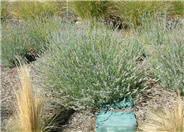
Common name:Grosso Long Stemmed Lavender
Botanical name:Lavandula X intermedia 'Grosso'
Long Stemmed Lavender has beautiful violet colored plumes in the summer. Very drought tolerant and it is a great plant to create that Mediterranean effect.
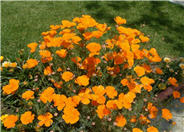
Common name:California Poppy, Golden Poppy
Botanical name:Eschscholzia californica
This small annual (sometimes acts as a perennial) plant will grow to less than 1' tall and has light, small blue/green leaves with gold and orange flowers that bloom in spring and summer.
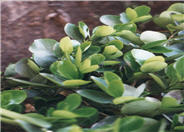
Common name:Kupuka Tree
Botanical name:Griselinia littoralis
This broad shrub will grow 6-15' tall and has medium-size greenish/yellow leaves without flowers. It does well in full sun or partial shade with regular watering.
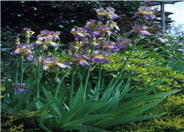
Common name:Bearded Iris
Botanical name:Iris Bearded Hybrids
This perennial will grow 1-3' tall and has medium-size blue/green leaves with wonderful flowers that come in a variety of colors.
| Designer: | Lush Greenery and Orange Pops |
Photographer: GardenSoft |
Soils and Compost:
Physical weed control, including mulching, or hand removal protects the watershed from harmful chemicals.
Water Saving Tip:
Group plants in your garden according to water needs (hydrozone).
Integrated Pest Management:
Drip and other smart irrigation delivers water directly to roots, allowing no excess water for weeds.
